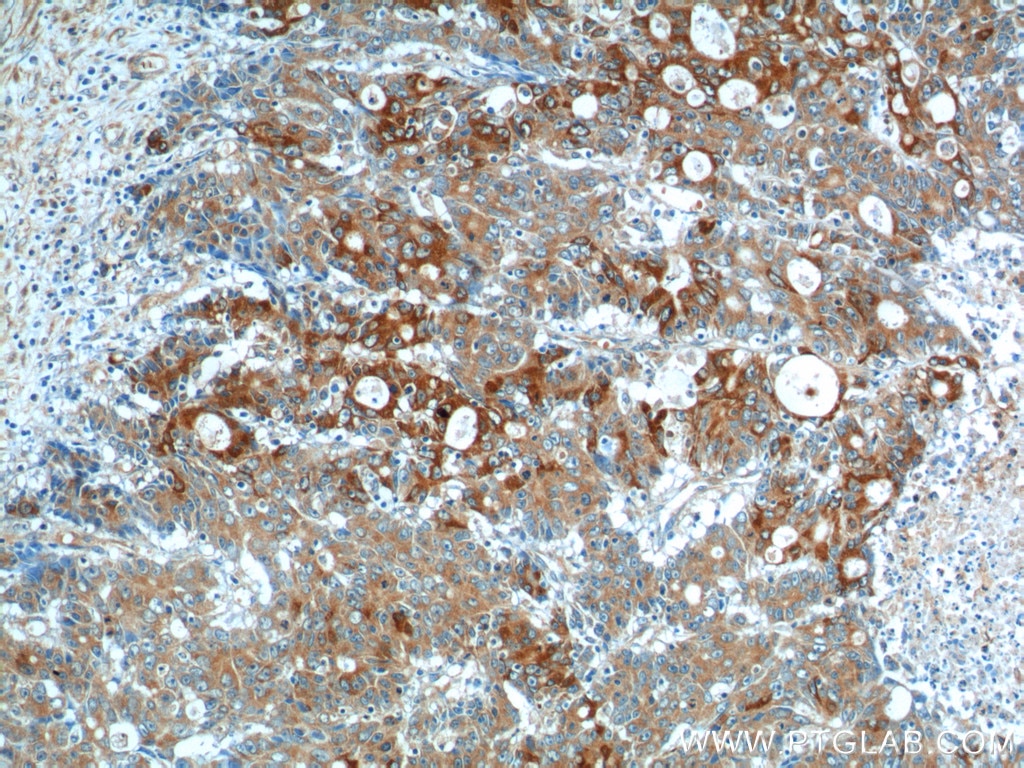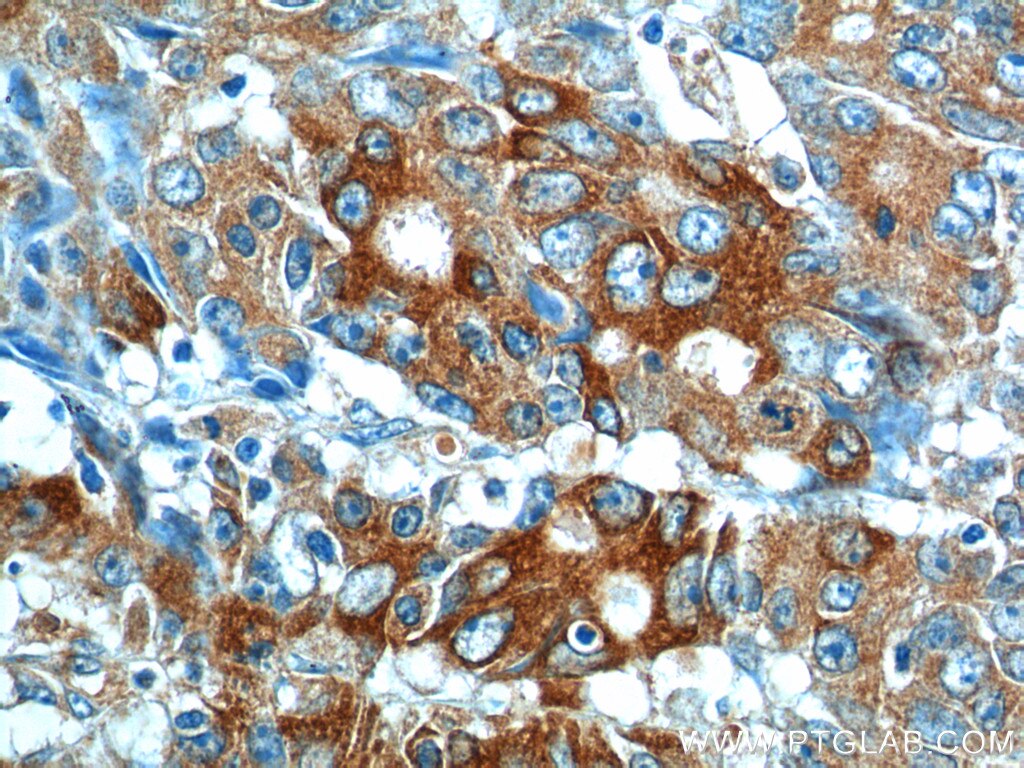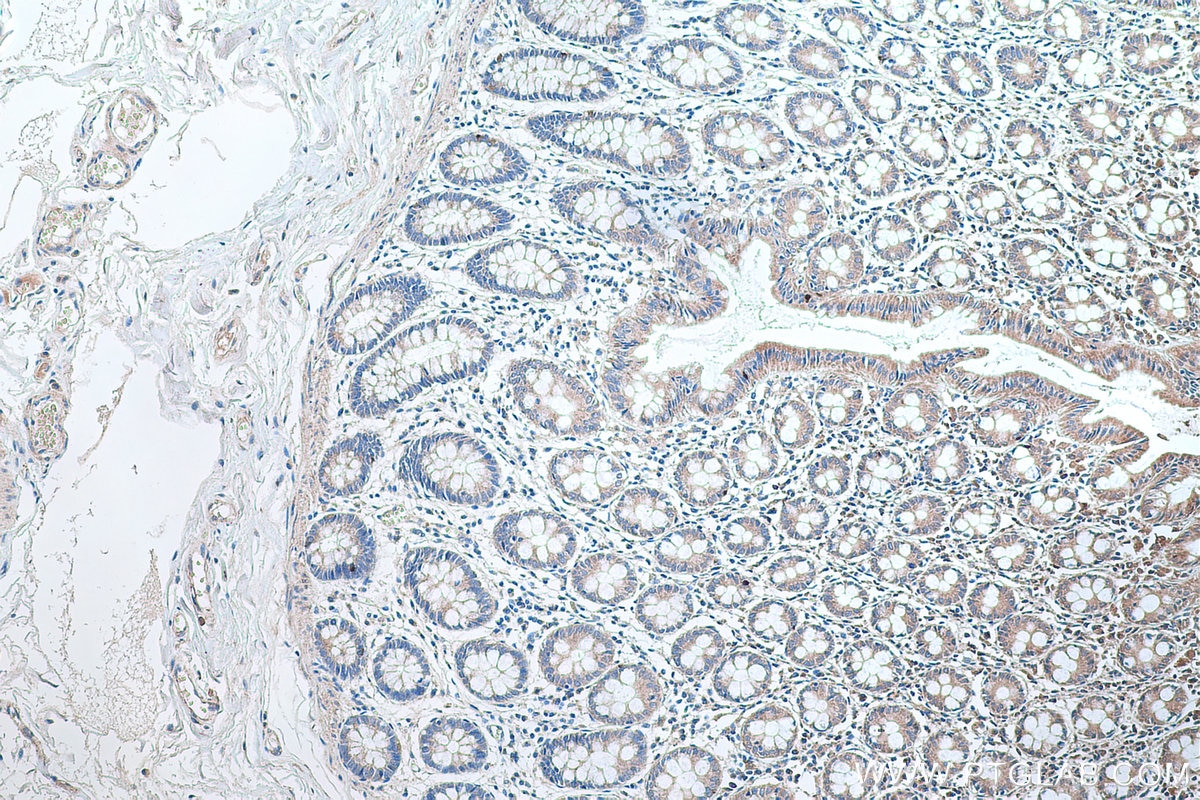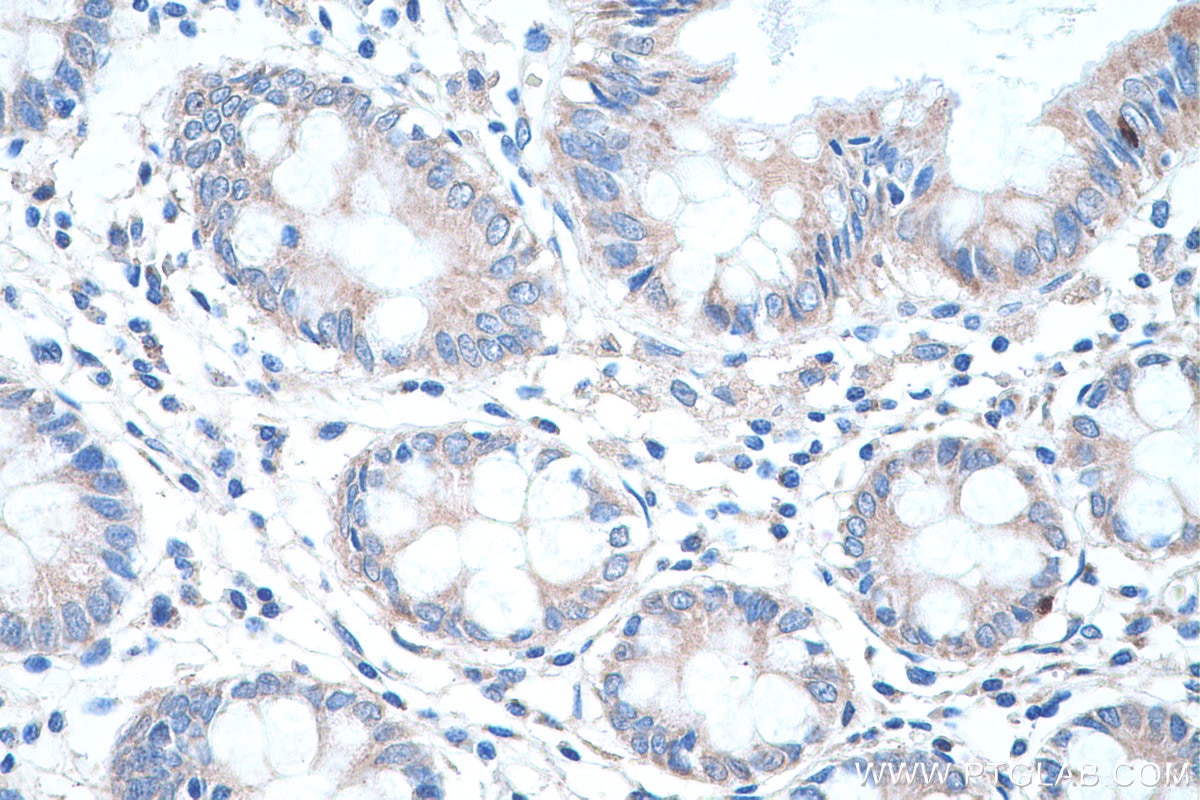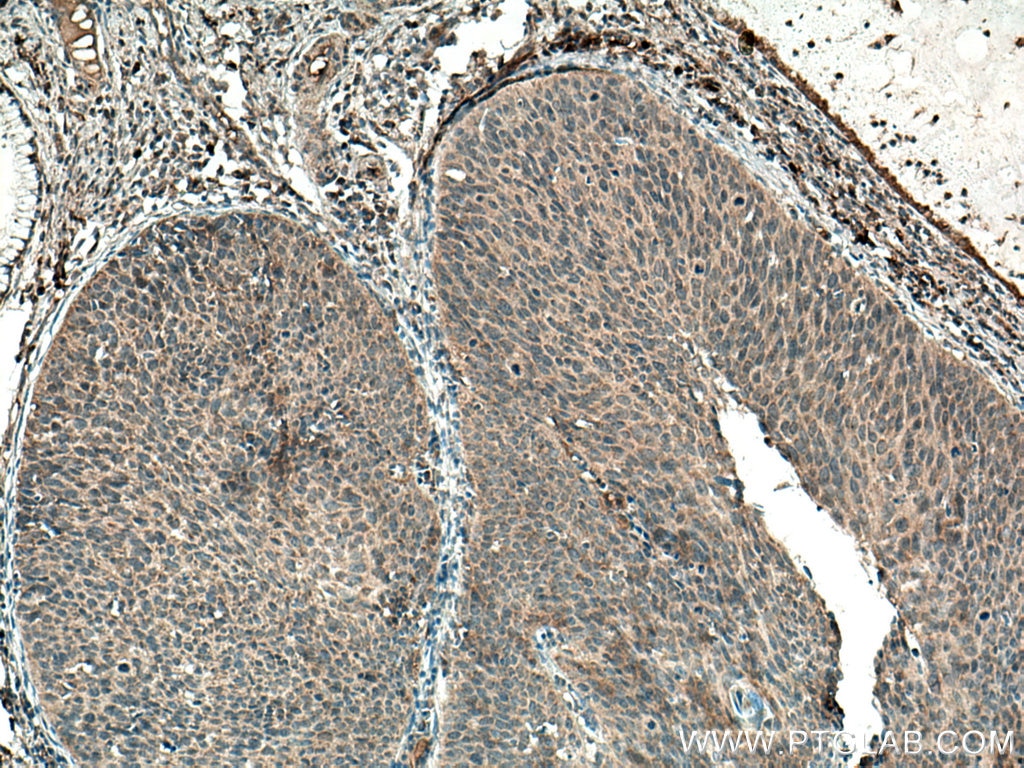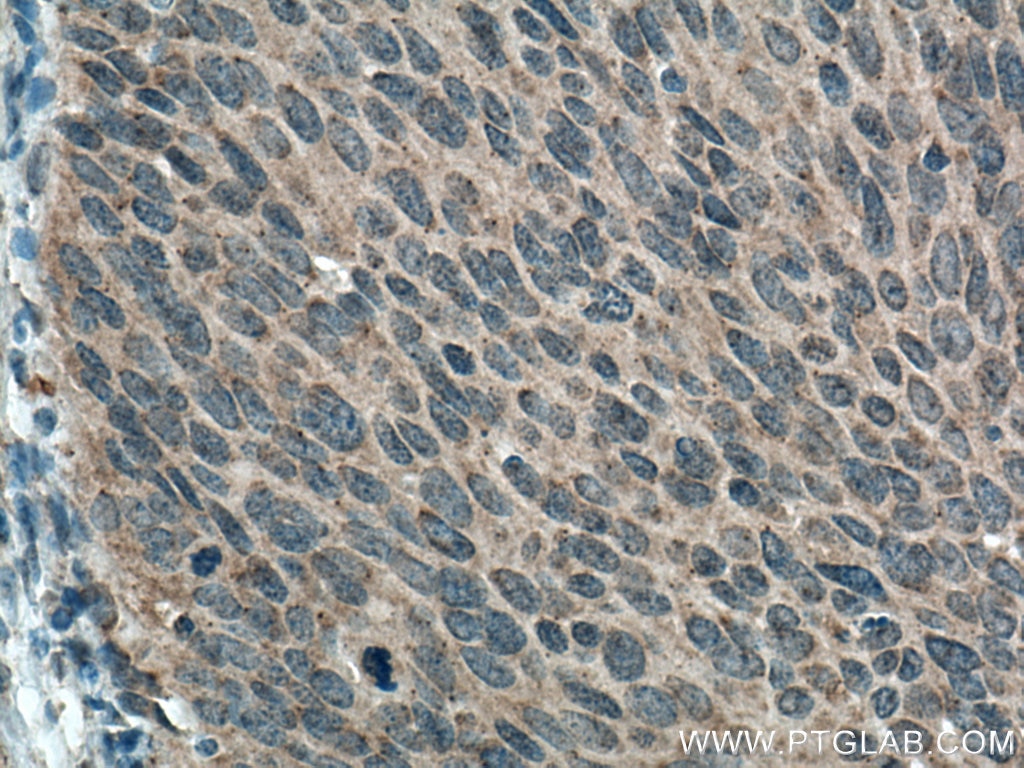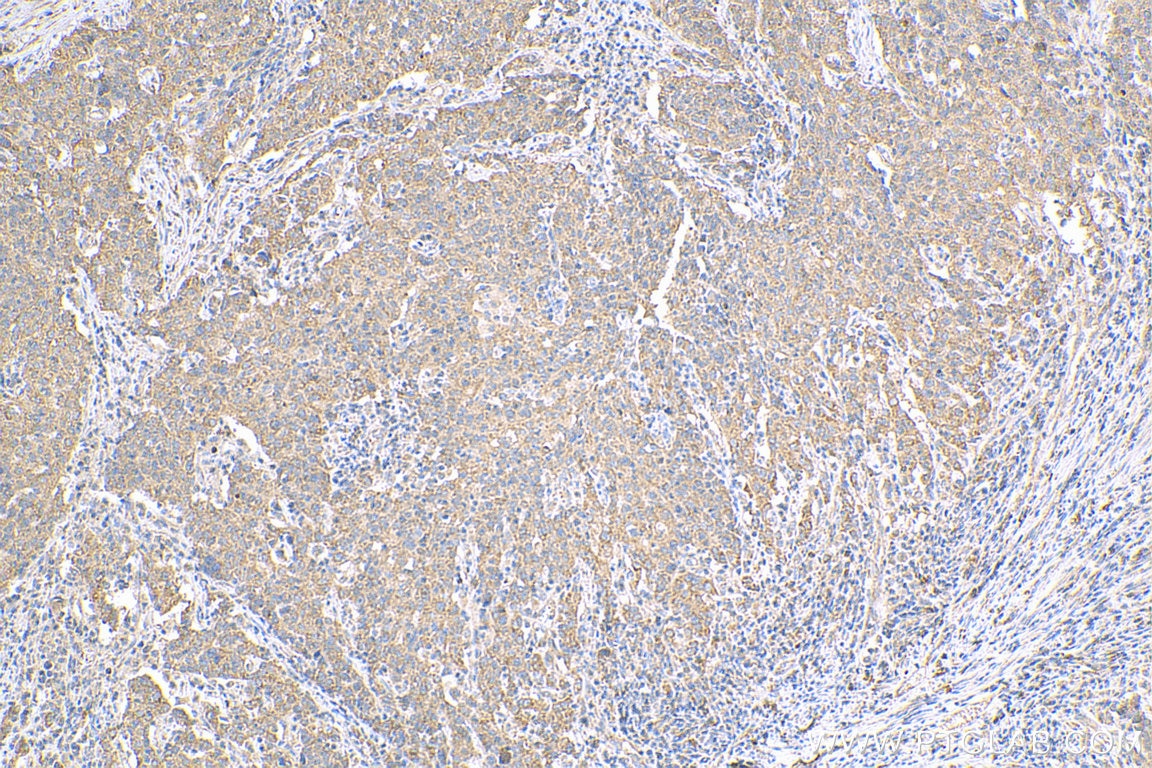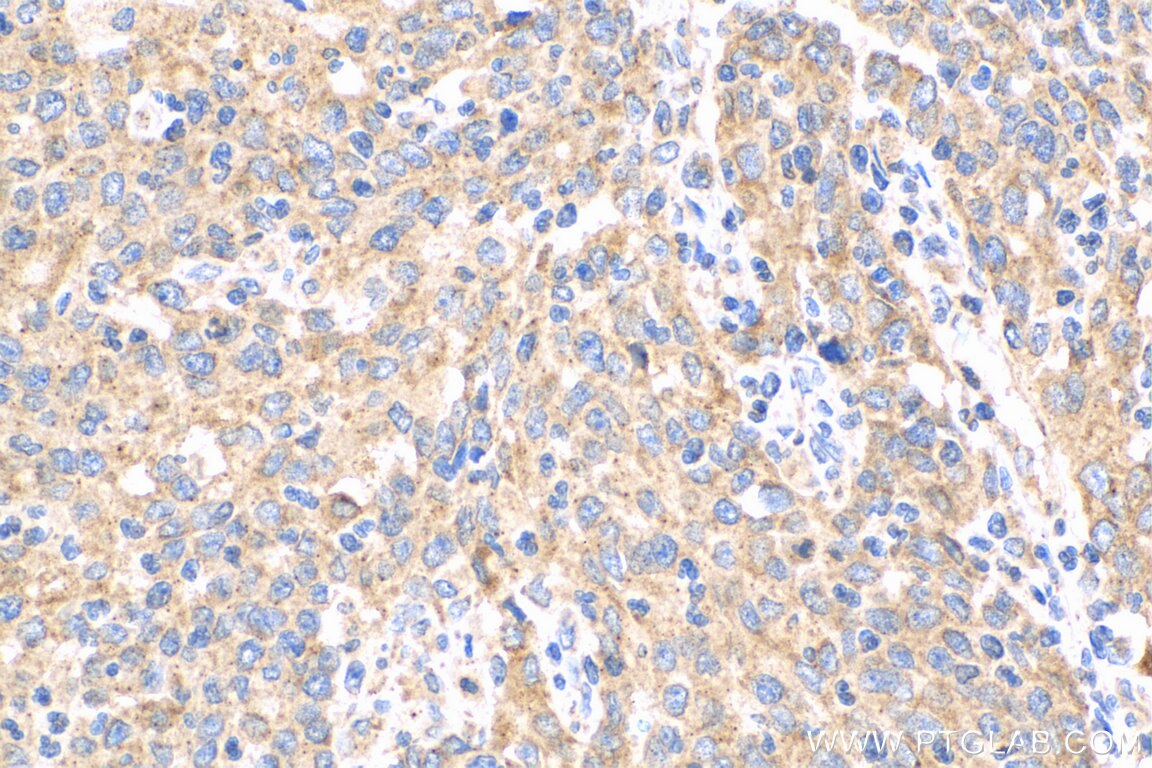Anticorps Polyclonal de lapin anti-IL-17A
IL-17A Polyclonal Antibody for IHC, ELISA
Hôte / Isotype
Lapin / IgG
Réactivité testée
Humain et plus (1)
Applications
WB, IHC, IF, ELISA
Conjugaison
Non conjugué
N° de cat : 13082-1-AP
Synonymes
Galerie de données de validation
Applications testées
| Résultats positifs en IHC | tissu de cancer du côlon humain, tissu de cancer de l'estomac humain, tissu de cancer du col de l'utérus humain, tissu de côlon humain il est suggéré de démasquer l'antigène avec un tampon de TE buffer pH 9.0; (*) À défaut, 'le démasquage de l'antigène peut être 'effectué avec un tampon citrate pH 6,0. |
Dilution recommandée
| Application | Dilution |
|---|---|
| Immunohistochimie (IHC) | IHC : 1:50-1:500 |
| It is recommended that this reagent should be titrated in each testing system to obtain optimal results. | |
| Sample-dependent, check data in validation data gallery | |
Applications publiées
| WB | See 16 publications below |
| IHC | See 34 publications below |
| IF | See 12 publications below |
| FC | See 1 publications below |
Informations sur le produit
13082-1-AP cible IL-17A dans les applications de WB, IHC, IF, ELISA et montre une réactivité avec des échantillons Humain
| Réactivité | Humain |
| Réactivité citée | Humain, Lapin |
| Hôte / Isotype | Lapin / IgG |
| Clonalité | Polyclonal |
| Type | Anticorps |
| Immunogène | IL-17A Protéine recombinante Ag3733 |
| Nom complet | interleukin 17A |
| Masse moléculaire calculée | 155 aa, 18 kDa |
| Numéro d’acquisition GenBank | BC067505 |
| Symbole du gène | IL-17A |
| Identification du gène (NCBI) | 3605 |
| Conjugaison | Non conjugué |
| Forme | Liquide |
| Méthode de purification | Purification par affinité contre l'antigène |
| Tampon de stockage | PBS with 0.02% sodium azide and 50% glycerol |
| Conditions de stockage | Stocker à -20°C. Stable pendant un an après l'expédition. L'aliquotage n'est pas nécessaire pour le stockage à -20oC Les 20ul contiennent 0,1% de BSA. |
Informations générales
IL17A, also named as IL-17, is a proinflammatory cytokine. IL-17, synthesized only by memory T cells and natural killer cells, has pleiotropic effects, mainly in the recruitment and activation of neutrophils. This cytokine regulates the activities of NF-kappaB and mitogen-activated protein kinases. This cytokine can stimulate the expression of IL6 and cyclooxygenase-2 (PTGS2/COX-2), as well as enhance the production of nitric oxide (NO). High levels of this cytokine are associated with several chronic inflammatory diseases including rheumatoid arthritis, psoriasis and multiple sclerosis. The IL-17 receptor is a type I transmembrane protein, that is widely expressed on epithelial cells, fibroblasts, B and T cells, and monocytic cells. In psoriatic skin lesions, both Th17 cells and their downstream effector molecules, e.g. IL-17 and IL-22, are highly increased. This antibody got 32-35 kDa band in western blot, maybe due to homodimer formation and differential glycosylations.
Protocole
| Product Specific Protocols | |
|---|---|
| IHC protocol for IL-17A antibody 13082-1-AP | Download protocol |
| Standard Protocols | |
|---|---|
| Click here to view our Standard Protocols |
Publications
| Species | Application | Title |
|---|---|---|
Brain Behav Immun Egln3 expression in microglia enhances the neuroinflammatory responses in Alzheimer's disease | ||
Int J Biol Macromol Chitosan-modified dihydromyricetin liposomes promote the repair of liver injury in mice suffering from diabetes mellitus | ||
J Autoimmun IL-17 is expressed on beta and alpha cells of donors with type 1 and type 2 diabetes. | ||
J Med Chem Discovery of Orally Available Retinoic Acid Receptor-Related Orphan Receptor γ-t/Dihydroorotate Dehydrogenase Dual Inhibitors for the Treatment of Refractory Inflammatory Bowel Disease. | ||
J Invest Dermatol Reduced Il17a expression distinguishes a Ly6c(lo)MHCII(hi) macrophage population promoting wound healing. | ||
Arch Oral Biol Age-related changes of CD4+ T cell migration and cytokine expression in germ-free and SPF mice periodontium. |
